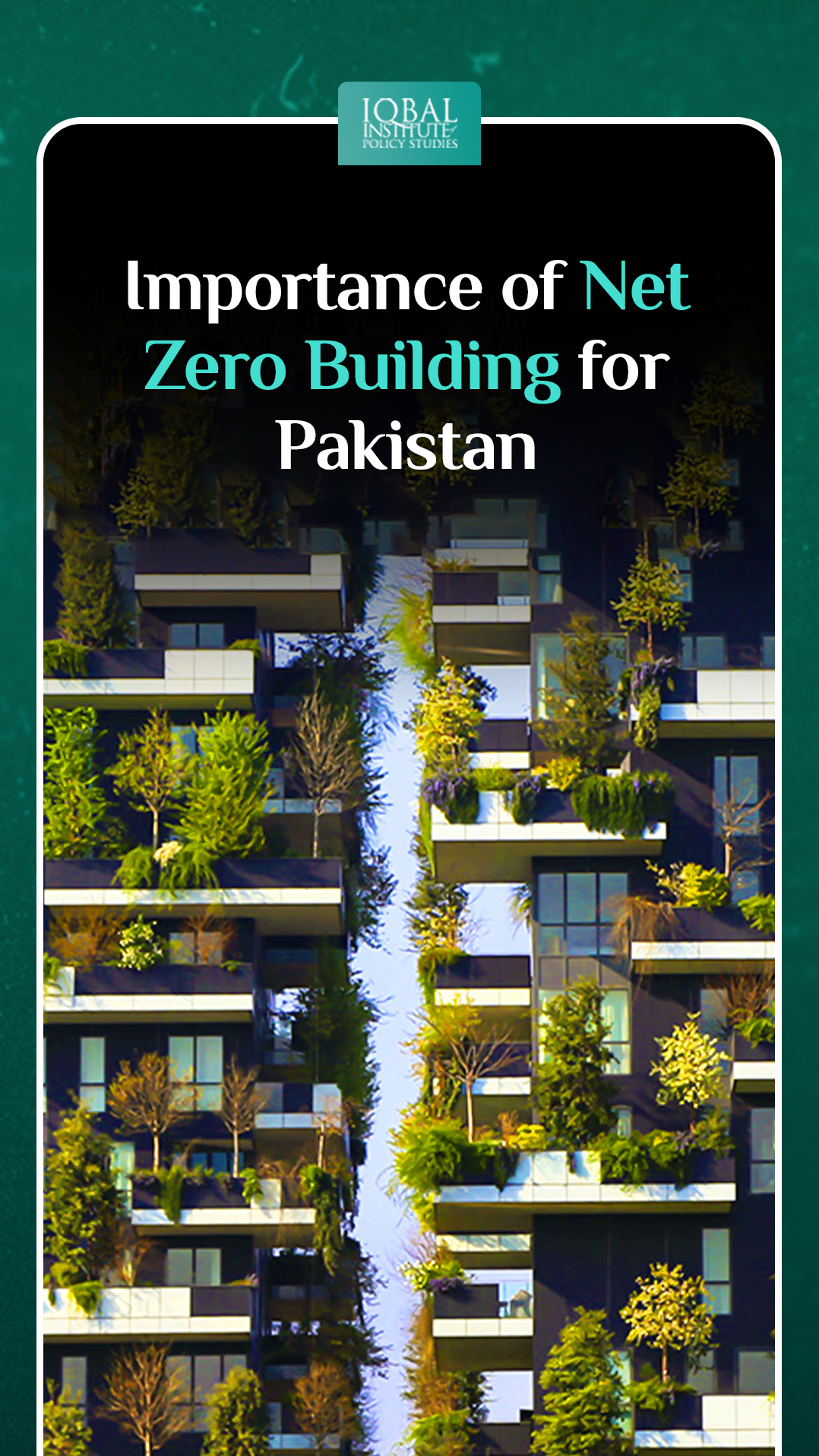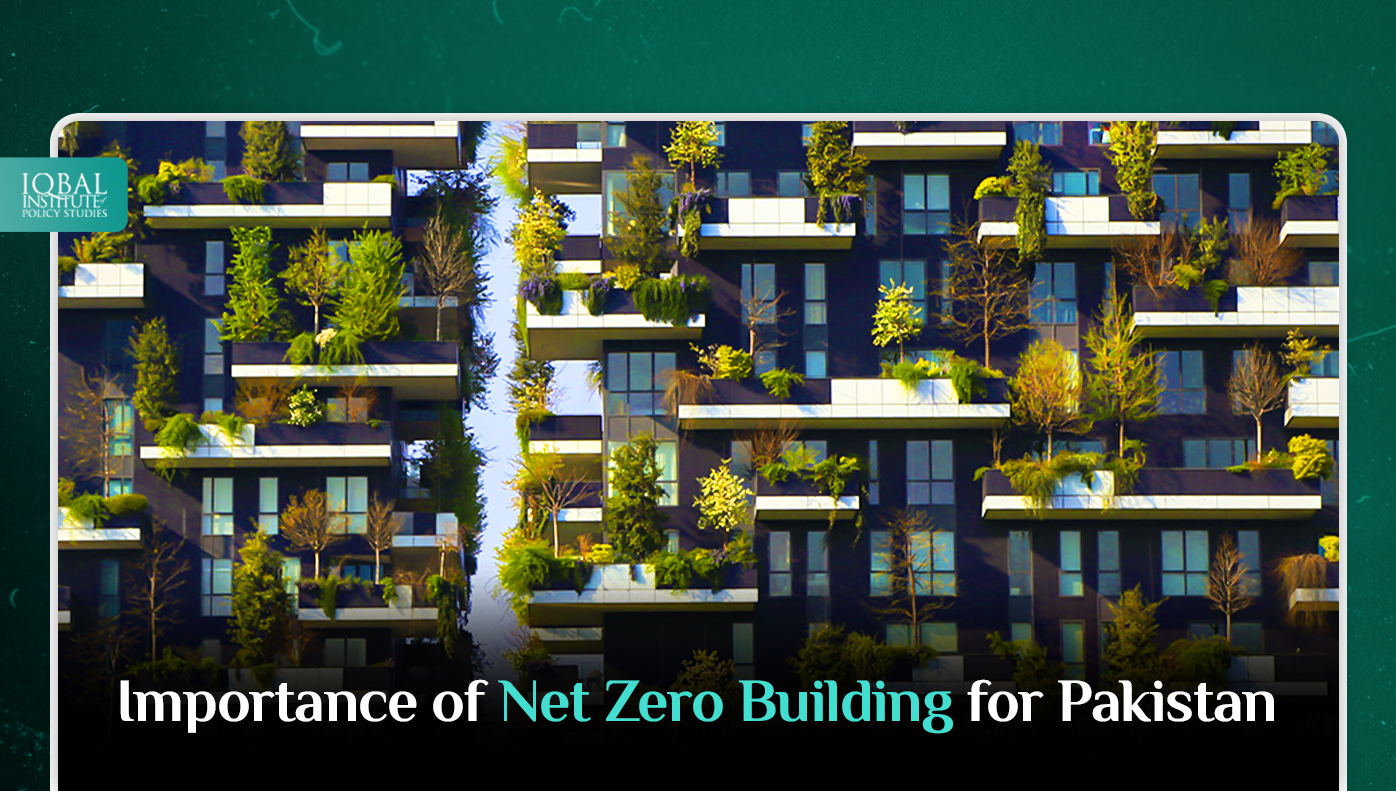Net zero-carbon buildings are the future of eco-friendly and sustainable living. These buildings are designed to tackle the ominous threats of global warming by producing and contributing energy through renewable resources. The radical shifts in climate around the globe are forcing countries to transform their socio-economic sectors to achieve net zero carbon emissions. As a result, net zero buildings are becoming quite popular among builders. It was found that the building sector is responsible for 30 percent of carbon emissions, and the real estate industry is being shaped for a better future and world. Pakistan’s real estate sector is one of its largest industries, vital for its society and economy. However, the ongoing climate crisis in the country has resulted in its destruction and loss of unimaginable proportions. Therefore, Pakistan needs to take action to achieve net zero carbon instead of waiting for international efforts. This calls for completely transforming its building and construction sectors into net zero carbon buildings as it is one of the only effective options to build a sustainable future.
Current Scenario in Pakistan
Although Pakistan’s contribution to climate change is less than 1%, it is highly prone to climate disasters due to its geographical location. It experiences recurring heat waves, droughts, riverine, flash floods, and landslides. Moreover, this year the monsoon floods have caused havoc by affecting 33 million people and killing more than 1000 people. Furthermore, agriculture is an eminent source of employment for 42 per cent of the population. However, the floods have affected agriculture-related activities, food production, and livelihoods. Approximately 3.6 million acres of crops have been affected across the country due to floods (OCHA, 2022). Moreover, 39 per cent of the population experience multidimensional poverty, and the loss of livelihoods resulting in huge consequences on people’s well-being and ability to afford healthcare (reliefweb, 2021).
In addition to that Pakistan’s real estate sector which is growing at a rapid pace is aggravating the environmental crisis in the country. Illegal housing schemes, horizontal development, and expansion of cities are converting green belts, croplands, and forests into concrete jungles. As a result, the land surface temperature is rising. Moreover, the brick kiln industry is also contributing to the rising air pollution in the country. Despite, these climate change threats, the government and private sectors are not taking measures to mitigate the effects. Instead, they look up to international forums for help. If these practices are continued unquestioned, our major cities might turn into nature-less dystopia. Therefore, it is high time the government and private sectors take the matter into their own hands by introducing net zero-carbon buildings in the real estate industry to minimize the climate change effects. Adoption of net zero carbon buildings is a crucial need to combat future climate crises in the country.
What are Net Zero Carbon Buildings?
Net zero carbon buildings are highly energy efficient buildings that are self-powered by renewable energy sources such as solar and wind. These buildings produce and supply as much energy as it consumes on annual basis. These buildings strive to produce net zero carbon emissions in the atmosphere leading to a clean and healthy environment.
Benefits of Net-Zero Carbon Buildings
Efficiency
Net zero-carbon buildings produce and supply clean energy from renewable resources. It improves building energy efficiency by decarbonising the electricity grid, leading to the reduction of greenhouse gas emissions in cities. This improves the efficiency of the building as well as the standard of living.
Cost Effective
These buildings produce and supply their carbon-free energy from solar and wind. Moreover, they help to reduce energy poverty by minimising the cost of powering a home. In addition, they usually need less maintenance and don’t use up as much electricity. As a result, they are cheaper to run. However, from an economic perspective, combining several sustainable building solutions is more cost-friendly when applied to new constructions than existing ones. In new buildings, it will only cost below 10% of the total acquisition cost. On the other hand, retrofitting older buildings will result in payback periods at or below 10 years, requiring specific incentives for the residents (Madina, 2022).
Create Job Opportunities
Introducing net zero-carbon buildings into the real estate sector will attract foreign investments and funding. Moreover, it will create job opportunities for unskilled and skilled labour in the country. The industries that are associated with the real estate sector will also benefit from these new projects.
Beneficial for the Environment
These buildings contribute to fewer greenhouse gas emissions in the atmosphere. Moreover, they do not consume nonrenewable resources like fossil fuels, coal, oil, natural gas, etc., thus, leading to a healthy sustainable environment to live in (VESTIAN, 2019).
High Resale Value
The buildings constructed based on energy-efficient technology will require less maintenance. Therefore, net-zero energy buildings are seen as more desirable and valuable. As a result, the price of the property will rise significantly due to the reduction in maintenance.
Reliable
These buildings are resistant to extreme weather conditions and have a continuous supply of energy which is beneficial for Pakistan as it faces electricity shortages, power outages, and brownouts.
Boost the Economy
The real estate industry has great potential in Pakistan, however, it is contributing to the ongoing climate crisis. Therefore, the transformation of its projects to net zero carbon will not only improve the environment but also boost the economy of the country.
Challenges of Net Zero Buildings
Expensive
These buildings need modern technology and equipment for their construction which requires a lot of money. Since Pakistan’s economy is stagnant at the moment, it will require foreign investments and aid for net zero building planning, initiation, development, and construction. Furthermore, in locations where the installation of sustainable, on-site power is not possible, the emissions profile and expenditure of a building can be severely affected.
Lack of Experienced Labor
The net-zero carbon buildings workforce needs to be trained in the latest technology. The real estate sector and the government will have to invest money to train the workforce before investing in such projects.
Poor Urban Planning
Inefficient policies and poor urban planning due to a lack of political and civic involvement have resulted in a housing crisis, poor land management, a lack of infrastructure, and rapid urbanisation. There is also an absence of development of new towns and cities that may contribute to the sustainability and preservation of the environment.
Lack of Awareness
The literacy rate in Pakistan is quite low which leads to lack of awareness regarding radical climate change. Thus, their unsustainable and intense activities impact the environment, resulting in greater GHG emissions. Educating people about climate change and the need for better sustainable choices will require a lot of resources. Moreover, changing the industry mindset to switch from traditional construction to net zero-carbon buildings may be a slow process.
Way Forward
The ongoing climate crisis in the country has raised concerns among the masses regarding the future. It should be used as an opportunity by the government to create mass awareness regarding the importance of environmental sustainability and the impact of carbon emissions on it.
Instead of rebuilding the homes with traditional methods, the government should introduce net zero-carbon buildings in all flood-affected areas. It will not only accommodate and educate the people but also help reduce greenhouse emissions in the environment.
Moreover, the government should formulate and impose policies in all socio-economic sectors which promote green practices and ensure that all future developmental projects are net zero carbon projects.
Conclusion
The common issue all nations are facing these days is climate change and Pakistan is going through one. Instead of going back to the traditional practices of rebuilding and restoration after the floods, the government should work with private sectors to come up with new and efficient strategies to combat climate change. Since the real estate sector is one of the largest industries in the country, it should work towards the development of net zero-carbon buildings in flood-affected areas. It will not only solve the ongoing housing crisis but also reduce the carbon emissions from the environment. Net-zero-carbon buildings can create a safer, sustainable, and green future for Pakistan.
References
reliefweb. (2021, august 12). Retrieved from reliefweb.int: https://reliefweb.int/report/pakistan/climate-change-impacts-health-and-livelihoods-pakistan-assessment
skynews. (2022, august 29). Retrieved from news.sky.com: https://news.sky.com/story/why-pakistan-is-at-ground-zero-of-the-climate-crisis-after-suffering-deadly-flooding-12684458



Leave a Reply